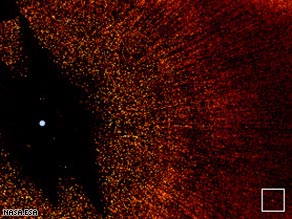
(By Dominic Bracco Ii -- The Washington Post)
Despite what marketers of products such as bamboo cutting boards and vegan silk gowns would have us believe, helping the planet doesn't require forking over your paycheck. It's really about conserving, not consuming -- so going green should also save you some.
Don't believe us? Try some of the tips below. These lifestyle changes can really add up, says Jennifer Abel, who manages education programs in finance and nutrition at the Virginia Cooperative Extension's Arlington office.
Bike, walk or run. By using your muscles instead of a car to get you places, you're saving gas and reducing carbon emissions. And if that change means you can skip going to the gym, you can also avoid those monthly fees and conserve the energy it takes to power all those exercise machines.
Drive smart. If you must get behind the wheel, remember this: Speeding, excessive idling, lapses in maintenance, improper tire pressure and hauling unnecessary cargo lower your gas mileage.
Stop eating lunch out. Bringing your food to work in reusable containers might keep as much as $1,500 a year in your pocket and a great deal of takeout packaging out of landfills. Also consider switching from expensive barista-made lattes to home-brewed organic, fair-trade coffee.
Visit the library. Borrow books, DVDs and CDs free -- that's a hard deal to beat.
Go electronic. Pay bills and get statements online; you'll save trees and stamps.
Swap stuff. Skip the mall and arrange a goods or clothing swap with friends and neighbors. (You know what they say about one man's trash.)
Conserve hot water. As much as 11 percent of a home's annual
energy costs comes from needing hot water, Abel says. Wash clothes in
cold water, take shorter showers, install low-flow faucets and turn
down your hot-water heater to 120 degrees.
Read up on the topic. Abel recommends the book "Go Green, Live Rich" by David Bach (Broadway Books, $14.95), as well as the Web sites http:/
'Business' 카테고리의 다른 글
| India's 40 Richest (0) | 2008.11.17 |
|---|---|
| 2009's Most Fuel-Efficient Vehicles (0) | 2008.11.17 |
| Big Box & Beyond (0) | 2008.11.17 |
| Less Power to Purchase (0) | 2008.11.17 |
| Google launches voice recognition app for mobile phones (0) | 2008.11.16 |



